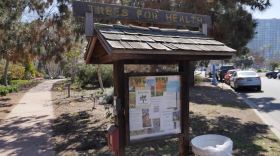The San Diego Foundation issued a new report that showed just how large the equity gap is in what U.S. News just labeled the most expensive place to live in the United States.
More than 1 in 10 San Diegans live under the federal poverty line, which is $30,000 a year for a family of four.
“Could you imagine trying to make ends meet on $30,000 a year in San Diego County?” asked Daniel Enemark, chief economist with the San Diego Regional Policy and Innovation Center. The center partnered with the San Diego Foundation to write the report.
“It’s impossible. It’s literally impossible. But 335,000 San Diego County residents live in exactly that circumstance,” Enemark said.
That number includes enough children to fill Petco Park — twice. More than 16,000 of the county’s K-12 students are unhoused, the report found.
Even more — 1 in 3 San Diegans, disproportionately Black and Latino — can’t afford basic expenses like housing, food and child care.
The San Diego Foundation proposed a solution: investing more in immigrants.
San Diego County has the ninth largest population of immigrants of any county in America, Enemark said. And research suggests that’s an asset.
In 2020, in the City of San Diego alone, foreign-born residents generated $2.68 billion in federal taxes and $946.3 million in state and local taxes.
Research also shows that immigration improves employment, wages and productivity in the economy overall — whether or not those immigrants are labeled as “highly skilled” and if they are documented.
Many immigrants arrive in San Diego, but only a small portion of them stay. The foundation argued that better connecting immigrants to resources could be a first step in addressing poverty for all San Diegans.
The report looked at an array of inequities, including incarceration, health care, life expectancy, education, internet access and more. Enemark noted that every one of the three dozen metrics they analyzed showed Black and Latino residents as being especially burdened.





